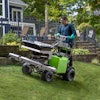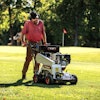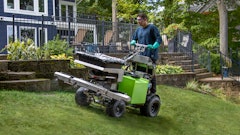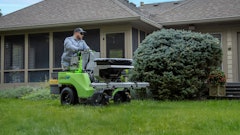It’s a wondrous world, and anyone making a living in the Green Industry should have a basic understanding of the life forces at work, according to Bill Hildebolt, Ph.D., Landscape Industry Certified Manager & Technician and past PLANET President. He notes that the foundation to this understanding is photosynthesis.
“This process fuels all living beings without which there would be no life, and earth would be one giant desolate rock orbiting the sun,” Hildebolt says. Because of the earth’s ideal distance from the sun, we have the perfect atmosphere to sustain life. A click here or there, and this beautiful planet would be nothing but desert or an ice cap. Similarly, our proximity to the moon creates tidal currents that sustain much of our flora and fauna.
“Regardless of religious preference, most of us would agree that life exists because of a thin layer of soil, abundant sunshine and rain. Because of the miracle of photosynthesis, we have food and shelter. We are quickly finding out, however, that soil, sunshine and rain have to be in balance to provide life, and in today’s modern world, this balance is tenuous. As members of the Green Industry, we are charged to ensure this balance and to protect our environment. We are in a privileged position to make a difference. Life on earth is a miracle, and it’s a miracle we have to work at to sustain.”
Turfgrass Benefits Often Taken for Granted
Hildebolt, the owner of Nature’s Select Premium Turf Services in Winston-Salem, NC, notes that the benefits of having a healthy turfgrass are all too often taken for granted by customers. “One of the biggest challenges we face today as landscape contractors and lawn care operators is to educate the customer about the positive impact our services have on the environment,” he says. “Doing so effectively will have benefits in the legislative arena where detractors are trying to ban control products and give property owners one more important reason to take advantage of our service offering.”
Hildebolt references a PLANET publication, “Guide to Growing a Successful Lawn Care Business”, to point out a few benefits of having healthy and well-maintained turfgrass and landscapes:
- Purifies the air. Just one acre of flourishing turfgrass can absorb hundreds of pounds of sulfur dioxide a year and help reduce ozone, hydrogen fluoride and peroxylacetyl nitrate, the worst group of atmospheric pollutants.
- Sequesters carbon. Through the process of photosynthesis, the chlorophyll in plant material purges carbon dioxide from the air.
- Generates oxygen. It’s common knowledge that grass plants generate oxygen, but do property owners truly realize that 50 feet by 50 feet of lawn generates enough oxygen to meet the needs of a family of four.
- Conserves and purifies water. Turf not only traps and holds rainfall better than most surfaces, it also helps to lock up nitrogen and phosphorous in the root zone, preventing these elements from leaching down into the groundwater.
- Moderates temperature. On a hot summer day, an acre of turf will lose about 2,400 gallons of water through evaporation and transpiration, which can dissipate approximately 50% of accumulated solar heat. In other words, when the sidewalk or street temperature reads well over 100° F, the temperature at the turfgrass surface will remain around 75° F.
- Increases soil fertility. Grass and leaf clippings left on the ground become part of a continuous growth and decomposition cycle, providing food for microorganisms that are crucial to a living, dynamic soil system.
Beauty Has Value
Healthy turfgrass and landscapes provide many other benefits, Hildebolt emphasizes. “They are aesthetically appealing. In fact, what would our communities look like without well-maintained parks, school yards and shopping districts? They provide a wide range of physiological and psychological benefits, too, and healthy, lush turfgrass works to control pests, abate noise, and prevent and control fires.
“We have been and continue to be stewards of our environment,” Hildebolt adds. “The spotlight on sustainability gives the Green Industry an opportunity to retell its story to an audience that is likely more aware of what’s at stake than ever before.”




















